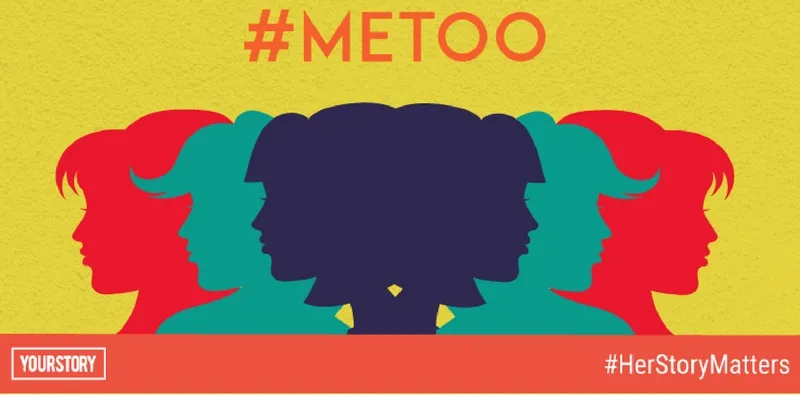Women may have an edge in the #MeToo battle, but the sexual harassment war is far from over
#MeToo and #TimesUp have become rallying cries against sexual harassment, but the movements need momentum to be more inclusive, systematised, and politically effective.

Last October, the world woke up to the #MeToo movement. Be it college girls, middle-aged women, cousins or acquaintances, most women had #MeToo as the status on their social media feeds. Everyone had a story of sexual harassment and assault; they were no longer ashamed to talk about it.
#MeToo spread virally as a hashtag on social media to demonstrate the pervasive prevalence of sexual misconduct and harassment, especially in the workplace. It followed multiple allegations of sexual misconduct against film producer Harvey Weinstein and was kick-started by actress Alyssa Milano – one of Weinstein’s most vocal critics - who posted on Twitter,
“If all women who have been sexually harassed or assaulted wrote ‘Me Too’ as a status, we might give people a sense of the magnitude of the problem.”
Since then, the phrase has become a rallying cry against sexual harassment. Countless stories of sexual violence were shared, including by celebrities like Gwyneth Paltrow, Jennifer Lawrence, Ashley Judd, and Uma Thurman.
The movement spread like wildfire across the world on social media. #MeToo had a sense of #WeToo and brought together women across ages, nationality, classes, colour, and caste to say “no more”.
Melanne Verveer, Executive Director of Georgetown Institute for Women, Peace and Security and former US Ambassador-at-Large for Global Women's Issues, said, “The #MeToo campaign is a watershed moment, where we can finally, once and for all, make progress on the kind of horrific incidents women face. One of the problems with sexual violence is that everybody fears to speak up and it becomes difficult to prosecute the perpetrator. I hope it is one of those moments in the progress of humanity where we can say this has begun to push back. This has to end.”
#MeToo led to #TimesUp, started on January 1, 2018, a call for change from women in Hollywood for women everywhere. #TimesUp is addressing the systemic inequality and injustice at the workplace, which has kept underrepresented groups from reaching their full potential.
Before #MeToo and #TimesUp, in March 2017, Susan Fowler, the woman whose blog post ultimately led Uber CEO Travis Kalanick to resign and the multibillion-dollar startup to expel at least 20 other employees, in an interview to Time magazine said:
“There's something really empowering about standing up for what's right… it's a badge of honour.”
Time honoured these brave women, the “Silence Breakers”, as the Time Person of the Year, voicing loudly what was – till last year - the secret everyone knew but no one spoke about.
Are we still on the same road?
In India, #MeToo brought to mind the horrific gang rape of a 23-year-old student in Delhi in December 2012, which saw an outburst from an unprecedented number of youth who launched a rallying cry for women’s safety and rights. It was a call against sexual assault, against harassment against women. There was a storm of discussions, articles, events, and talks. Much like what followed #MeToo.
It has been five years but has there been any change in sexual violence against women in India? This despite the fact that the Nirbhaya case led to the Justice Verma Committee’s recommendation and included offences such as voyeurism, stalking, disrobing, and trafficking of women in the list of crime against women. It also sought an increase in the punishment for various crimes against women and recommended a change in society’s victim-blaming attitude and its institutions. Laws were made more stringent against perpetrators of such crimes.
The National Crime Records Bureau reports in 2016 showed that crimes against women increased 34 percent in the past four years. Moreover, these numbers only provide a glimpse of the actual number of crimes against women and girls as the vast majority do not come forward and seek help from the police.
Vibha Setlur, a women’s rights lawyer and Co-founder and Partner, Legal Chap, says even though laws are more stringent, many times women themselves do not take the course of law.
“I have seen women do not want to go to the police station to file a complaint as they think they will have to keep following up. It is easy to put a status of #MeToo but when it comes to punishing the perpetrator we step back and think who will deal with the long proceedings. This is where we have failed.”
Sensitising the authorities
But the figures also demonstrate a growing willingness by women to come forward and report sexual crimes. Therefore, there is a need to change the way police officers are trained about gender violence.
As a World Economic Forum report, Here's how we can help to stop violence against women in India, says, “If Indian citizens can see the police as beacons of justice, protection and safety – for female victims and the communities they serve – there will be fewer victims pulling out of the criminal justice system. This will, in turn, help to address the limited impact of the government’s recent legislation to deal with violence against women and girls.”
The law and police in place can provide a redressal approach towards gender violence. However, a preventive approach seems tough to take for the issue at hand is of a patriarchal society – this is not limited to India alone but is a global issue.
Melanne said it rightly; that gender violence is neither a cultural issue nor a private issue, it should only be viewed as a criminal activity that needs to be punished. “You have men with enormous power, whether they are in Hollywood, business, or government, who use their power for self-gratification when it comes women; that has got to stop,” she said in an interview to YourStory.
How far have we come?
Women have raised their voice earlier as well. In India, the Bhanwri Devi case laid the foundation for sexual harassment laws at the workplace.
In the last few years, there has been a flurry of movements - the 2003 Blank Noise Project against harassment, the 2009 Pink Chaddi movement against moral policing, the 2011 SlutWalk protest against victim blaming, the 2011 Why Loiter project on women’s right to public spaces, the 2015 Pinjra Tod against sexist curfew rules in student halls, and the March 2017 Bekhauf Azadi Freedom without Fear March marked the rise of a new era in Indian feminism. All these movements and campaigns had large-scale women’s participation and were mostly social media-led phenomena.
Alka Kurian, Senior Lecturer, School of Interdisciplinary Arts and Sciences, University of Washington, sees these social-media-led movements as the rise of “fourth-wave” feminism in India. She has said,
“I borrow the idea from British journalist and writer Kira Cochrane and American feminist blogger Jessica Valenti. While Cochrane and Valenti define the fourth wave in the West as online feminism, fourth wave in India, I claim, is a mostly social media-led holistic movement that combines women’s freedom with a wider call for social justice for minority men and women.”
The resurgence of feminism
Online dictionary Merriam-Webster revealed its word of the year in 2017: “Feminism - the theory of the political, economic, and social equality of the sexes; organised activity on behalf of women's rights and interests.”
Giving some insight into the data behind the decision, Merriam-Webster lexicographer and editor-at-large Peter Sokolowski said,
“When we look back at the past 12 months and combine an analysis of words that have seen a rise over the previous year along with instances of intense spikes of interest because of news events, we see that one word stands out in both categories.”
“Over the past year, a number of events have made people want to look up ‘feminism’. The Women’s March in Washington on January 21 set the tone; there has been no looking back since,” Sokolowski added.
In India, feminism till now focused on social issues such as child marriage, dowry-related violence, and sex-selective abortions. But the millennial youth are fighting for unconditional freedom for women. Women are demanding the absolute right to their choices, their bodies, and their movement – and there’s no stopping them.
As Kurian says: “What is unique about this movement is that it is a multilayered struggle. It combines freedom from sexual oppression with freedom from caste, ethnic, and religious oppression.”
Clearly, the time for #Times Up – across the world - is now.







